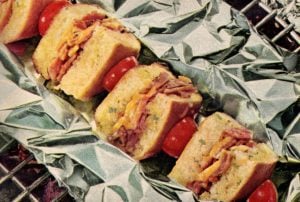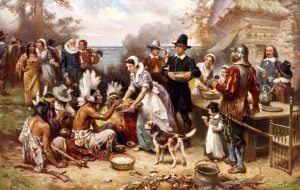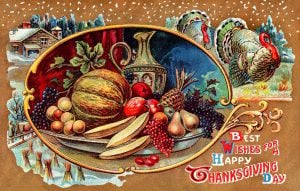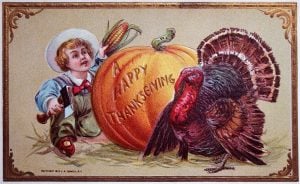Glossary of cooking terms & their definitions
From “Apollinaris water” (say what?!) to “zest,” this glossary covers a wide range of cooking terms and techniques that you may encounter in your culinary adventures. We hope this is a helpful reference as you explore the world of vintage cooking!
Apollinaris water: A naturally sparkling mineral water from Germany
Aspic: A clear gelatin made from vegetable or meat broth, or from processed gelatin
Baste: To spoon or ladle drippings, marinade or another liquid over food as it roasts
Batter: A flour-liquid mixture that is thin enough to pour
Beat: To stir vigorously with a spoon, or to beat with an egg beater or electric mixer
Bind: To add egg, thick sauce or another ingredient to a mixture to help it hold together
Blanch: To scald quickly in boiling water
Bombe: A frozen dessert with two or more flavors layered in a fancy mold — also the name of the mold itself
Bouillon: A clear stock (like bone broth) made of poultry, meat, vegetables and seasonings
Bread: To coat with bread crumbs
Coat: To cover with flour, crumbs or another dry mixture before frying
Comfits: Candy-coated nuts, seeds, fruits or spices (Jordan almonds would be considered large comfits)
Compote: A mixture of sweetened cooked fruits
Forcemeat: A mixture of ground raw or cooked meat/poultry/fish, combined with vegetables, bread crumbs, and spices or seasonings
Frizzle: To fry bacon or another thinly-sliced meat until the edges ruffle
Garnish: To decorate with colorful and/or fancy-cut small pieces of food (See Fancy fruit & veg! Do-it-yourself garnishes)
Gill: Generally considered to be 5 liquid ounces, or a quarter of a British pint (which is 20 ounces vs the US 16 ounces), or half an Imperial cup measure… however, depending on when the recipe was written, it could mean a quarter of an American pint, which would make it 4 liquid ounces, or half a cup
Glace: Means something is candied, such as glace cherries and other candied fruits
Hors d ‘oeuvre: Bite-sized appetizers, typically served with cocktails
Lard: White rendered pork fat, used as a primary cooking/baking fat for generations
Macedoine: A mixture of vegetables or fruits, cut into small pieces
Macerate: To let something steep in wine or spirits
Marzipan: A sugary almond paste, also called almond candy dough, used to make decorative edible shapes
Mold: To shape in a shaped mold (also may be spelled mould) – this does not refer to the fungi
Mull: To heat a liquid (often cider or wine) with spices so the beverage takes on the smell and flavor of the aromatics
Oleo: Margarine — a butter substitute (also called oleomargarine back in the 40s/50s)
Paraffin: A white wax — specifically petroleum wax, used in canning and preserving
Paraffin paper: Waxed paper
Pipe: To squeeze frosting, whipped cream, mashed potatoes, or another similarly soft mixture through a pastry tube
Plump: To soak raisins or other dried fruits in liquid until they are rehydrated and plump up
Poach: To cook in simmering liquid
Ragout: A stew, usually with meat and vegetables
Ramekin: A small individual-size baking dish
Saleratus: A leavening agent — potassium bicarbonate or sodium bicarbonate, aka baking soda. The first known use of the term was in 1837.
Shortening: Fat used to make cakes, pastries, cookies and bread flaky and tender (usually made with vegetable oil now)
Steep: To let food soak in liquid until the liquid absorbs its flavor, as in steeping tea in hot water
Stew: To cook meat and/or vegetabnles in hot liquid, then serve in the gravy created by the cooking process
Stock: Meat, poultry, fish or vegetable broth
Stud: To stick cloves, pieces of garlic, or another seasoning into the surface of a food to be cooked
Stuff: To fill the body cavity of fish or poultry
Timbale: A savory custard made with meat, fish, poultry or vegetables
Top of the bottle: The rich cream that rises to the top of a glass bottle of whole milk
Truss: To tie poultry (such as a Thanksgiving turkey) into a compact shape before roasting
Zest: The fragrant, oily and colored part of citrus fruit skin
MORE REFERENCE MATERIALS:



















